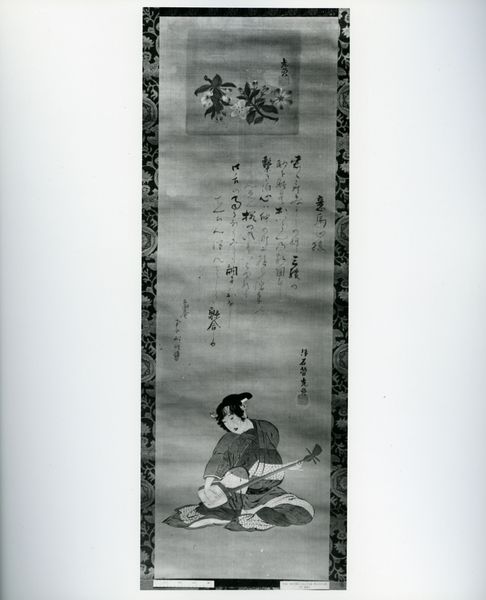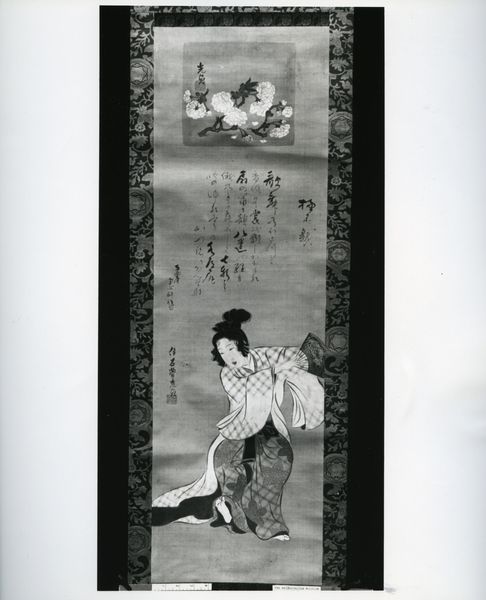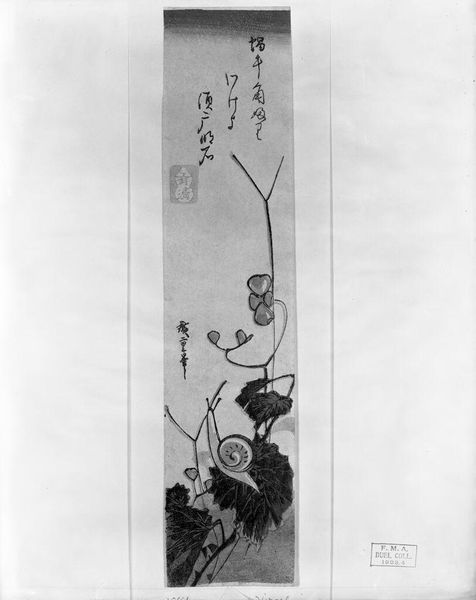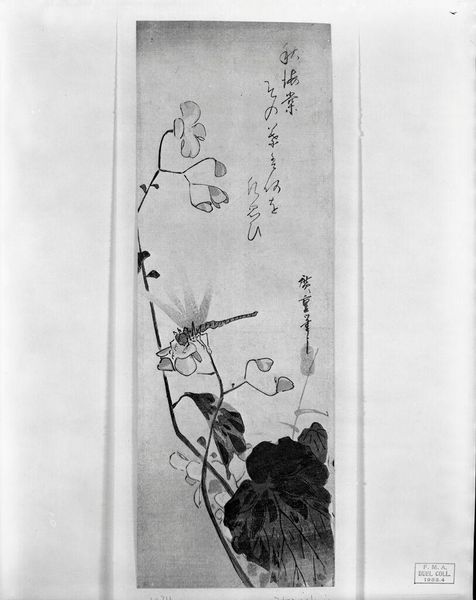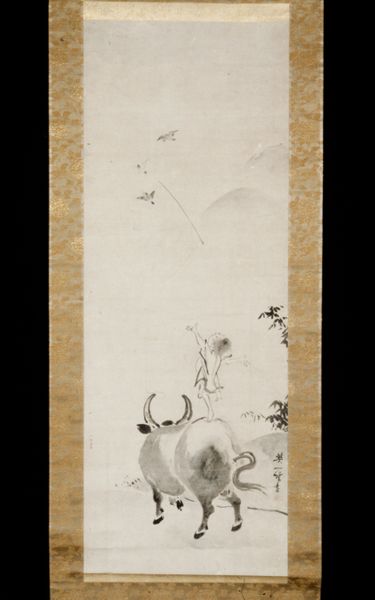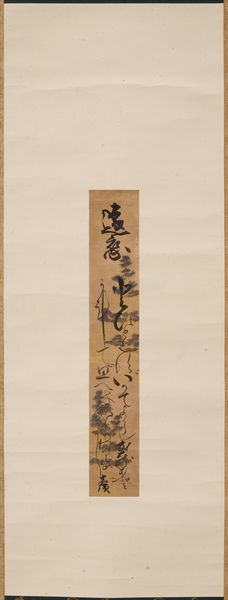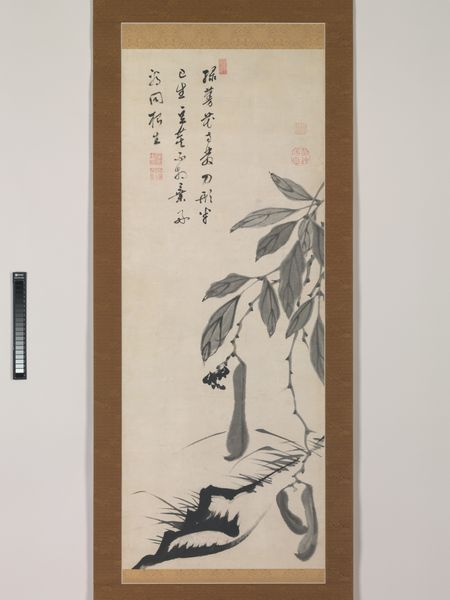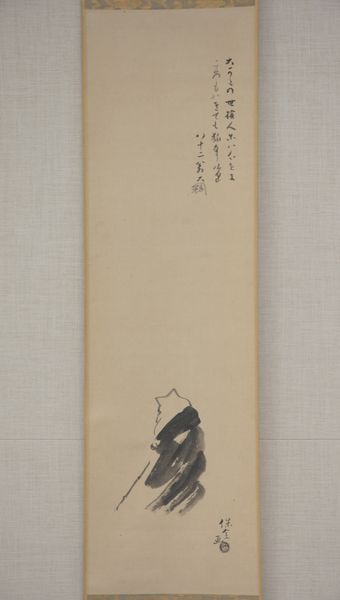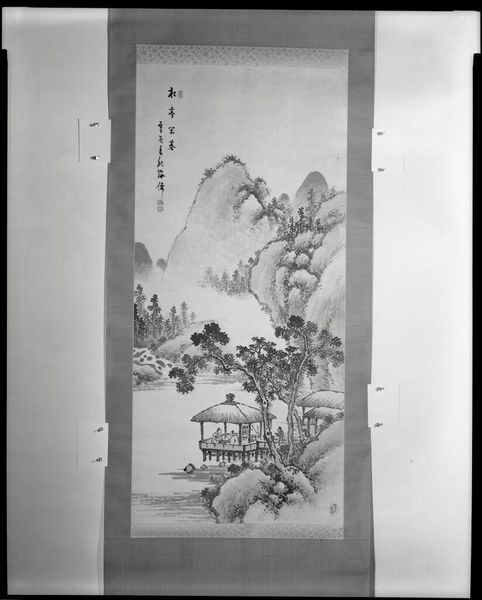
drawing, ink, woodblock-print
#
drawing
#
asian-art
#
landscape
#
ukiyo-e
#
ink
#
woodblock-print
#
orientalism
#
calligraphy
Dimensions: 40 x 12 3/16 in. (101.6 x 30.9 cm)
Copyright: Public Domain
Editor: Here we have Suga Mitsusada’s "Pleasure Quarters," created sometime between 1738 and 1806, using ink and woodblock printing techniques. The composition feels really unique with that contemplative figure at the bottom, calligraphy in the middle, and the little image at the top. How do you interpret this combination? Curator: This work opens up fascinating dialogues about representation and social hierarchy within the Edo period. Consider the title itself. "Pleasure Quarters" implies a specific social space often associated with entertainment, but for whom? Who has access to such a space and on what terms? The lone figure seems relaxed and contemplative, yet his attire may indicate his class. Do you notice how he’s separated spatially from the calligraphy and the floral motif above? Editor: Yes, the isolation is striking! Almost like layers of society being presented. Curator: Exactly. The calligraphy, rendered in elegant strokes, could be alluding to classical texts or high culture ideals which creates contrast. Meanwhile the floral image invokes themes of transient beauty. Considering that art from pleasure quarters often depicted women and fleeting encounters, Mitsusada seems to be engaging in social commentary. Editor: So the painting is sort of layering these social positions? What do you make of that contrast? Curator: The spatial arrangement is interesting because of the distinct, clearly defined visual sections. Is it creating tension by separating high from low or masculine from feminine, or both? It forces us to reflect upon the intersections of class, leisure, and artistic expression. What are your thoughts about that? Editor: That’s really interesting. I was initially focused on the visual elements, but seeing it in terms of social commentary completely shifts my understanding. Curator: Right. This Ukiyo-e scroll gives us a moment to consider how historical and cultural forces shape artistic expression and reception, as well as the complexities of social stratification during the Edo era.
Comments
No comments
Be the first to comment and join the conversation on the ultimate creative platform.
